Introduction #
Although I am old enough to remember PS/2 Port peripherals, it has been a long time since I used or owned one. After finding one on Facebook Marketplace from a reseller with cheap industrial equipment, I figured it could potentially have interesting circuits in it. In this post I disassemble the keyboard and make some comments on the construction and feasibility of the keyboard as a reverse engineering target.
The Keyboard #
The keyboard is labeled as a Labtec 867195-0000. There are no results for this specific model online, but Labtec was a large enough manufacturer to get its own Wikipedia page. The company ceased to exist as a solo entity in 2001 when it was absorbed by Logitech.

Markings #
The underside of the keyboard has numerous markings including two stickers and an embossed area in the plastic. The content of the embossed area includes the text below, including the typo (“notice and loss” which presumably was mean to be “notice any loss”).

FCC ID:IZITK-105M Made in China
Certified to comply with the limits for a Class B computing device pursuant to Subpart J of Part 15 of FCC Rules. See instructions if inference to radio reception is suspected.
Caution: Avoid prolonged use of the keyboard. Take regular breaks and keep a good posture. Consult your physician promptly if you notice and loss of motion or pain in your wrist when using the keyboard.
Logos for Canadian Standards Association and CE.
One of the stickers is a simple QA sticker, and the other has the following information:
Labtec Internet Keyboard P/N: 867195-0000 M/N: Y-SN28 S/N: CA C23183174 CE and FCC markings Test to Comply With Fcc Standards FOR HOME OR OFFICE USE MADE IN CHINA
Teardown #
Disassembling this keyboard involves taking out 21 philips screws from the underside. When removing the screws, note that the three leftmost screws in the second row are longer than the other 18.
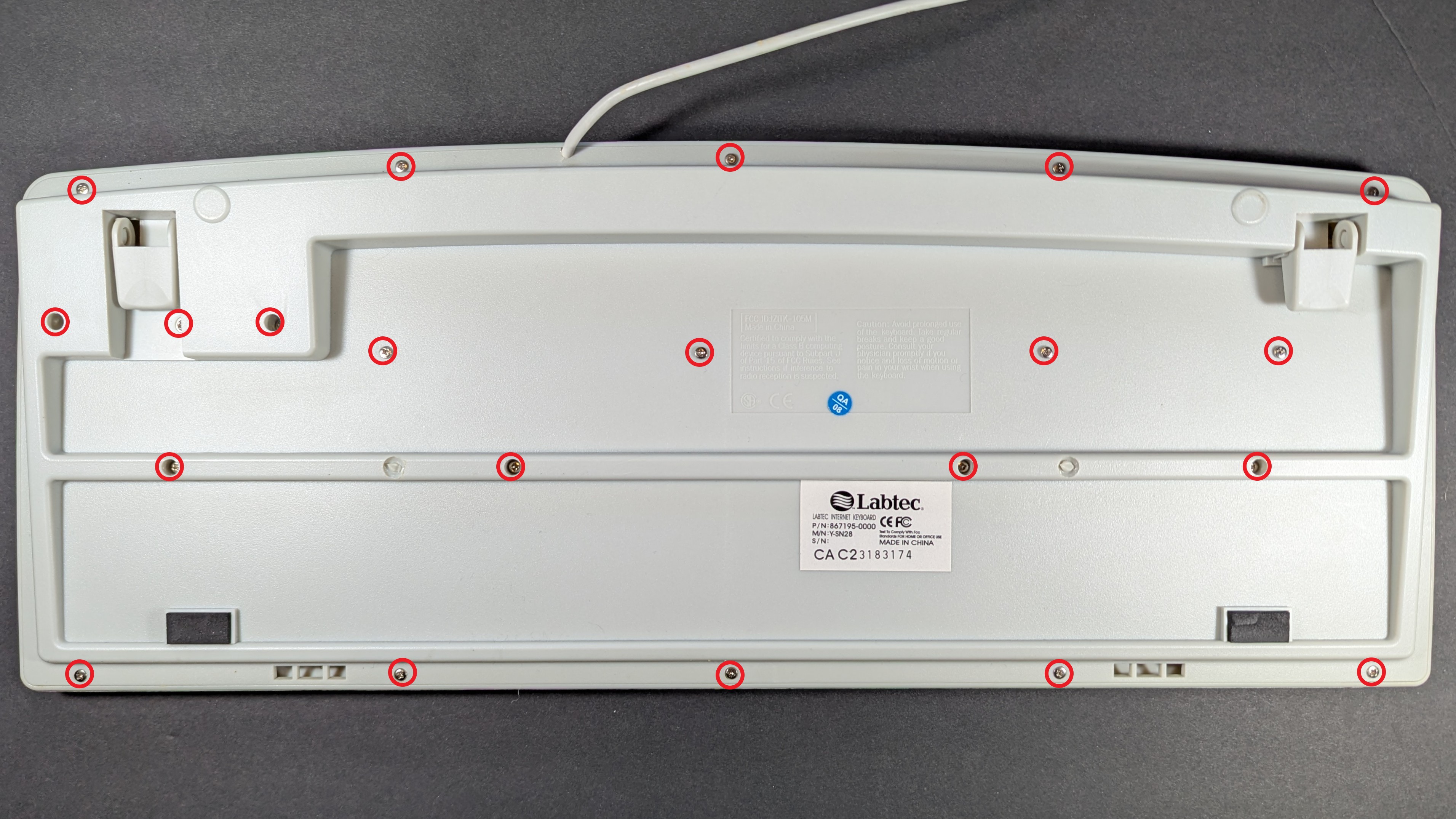
Once you removed the screws, you will want to carefully hold the cable and avoid pushing on any of the keys to stop the membrane and silicone cups from popping out and going everywhere. The PCBA is not secured to the front so the weight of the cable will likely pull it out and scatter parts if you are not careful.
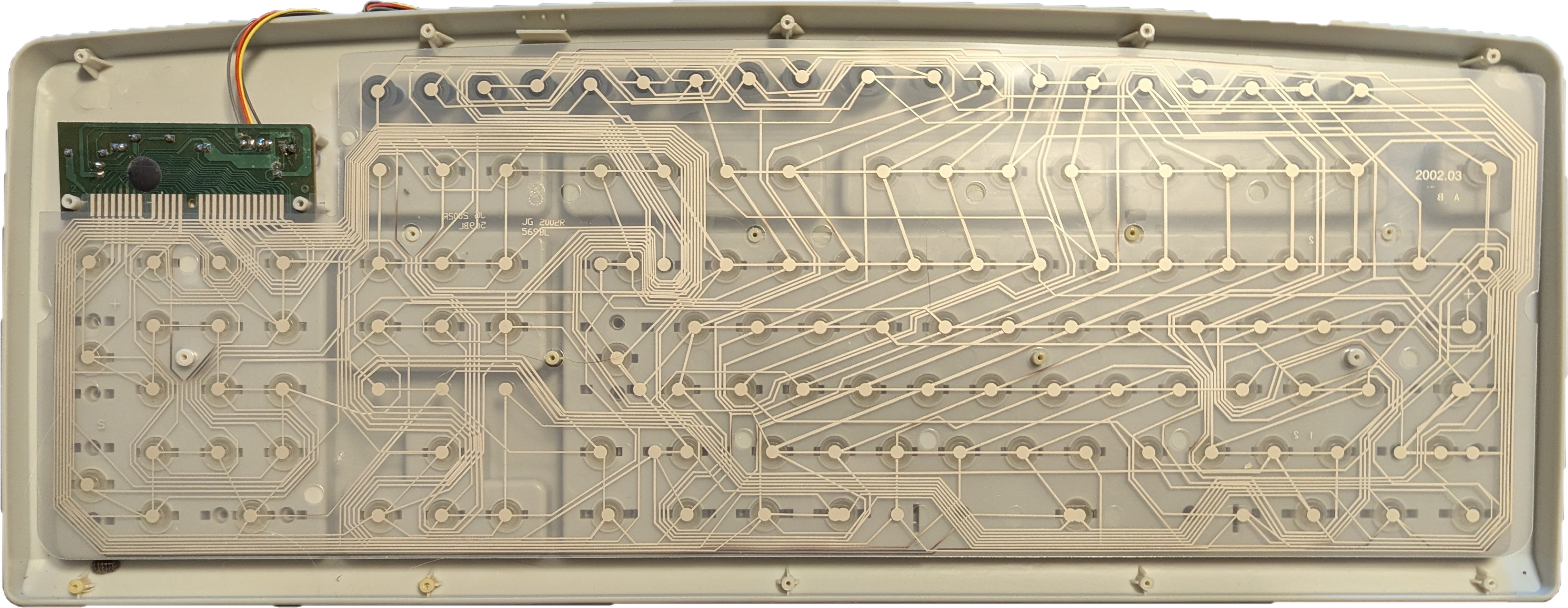
On the membrane, there are two markings that indicate it was either designed or manufactured in 2002 - just after the acquisition of Labtec by Logitech. Unfortunately we can also notice that the controller is an epoxy blob which makes this a poor target for board level reverse engineering.
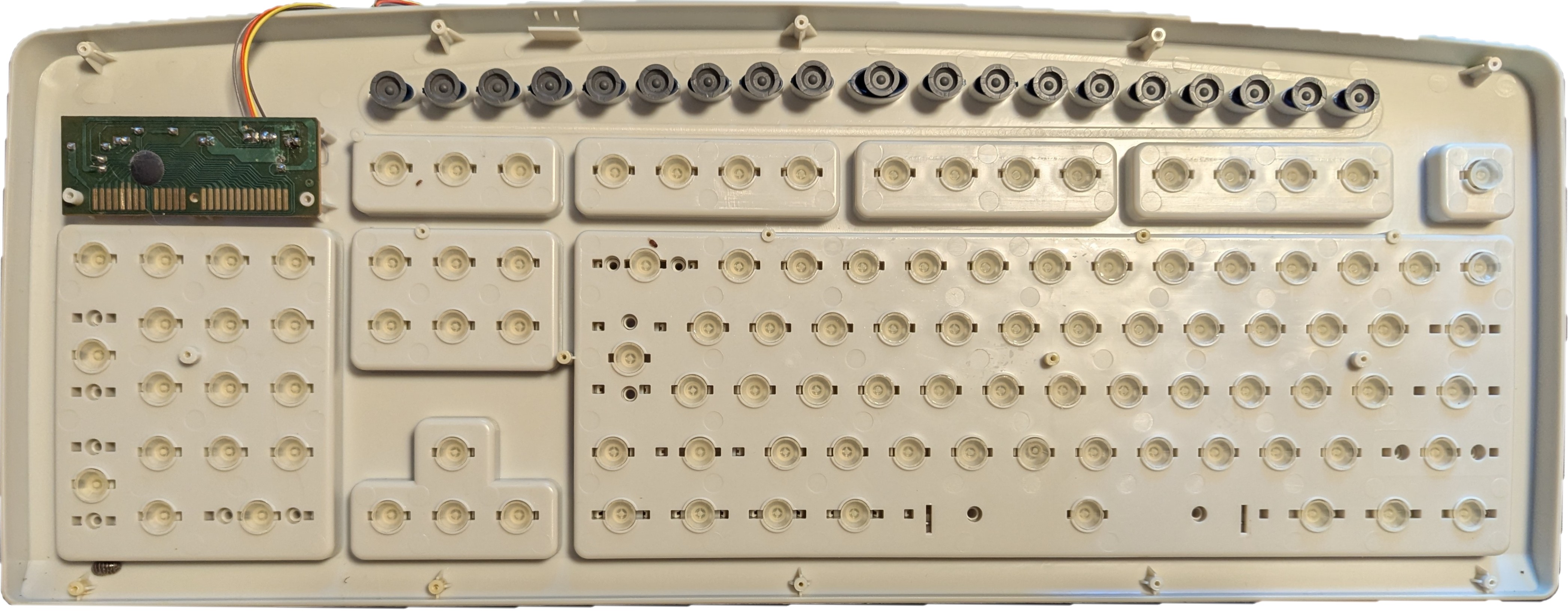
Removing the PCB we find a 1.6mm thick single sided circuit board. It has silkscreen only on the bare side where it is labelled as “COB-WIN2000 REV3”. Overall there are 8 components excluding the wires and ferrite.
- 3 LEDs
- 2 Electrolytic Capacitors
- 1 Wire Jumper
- 1 Resistor that has a confusing designator of Y1 (which would imply a crystal)
- 1 Epoxy blob covering the main IC
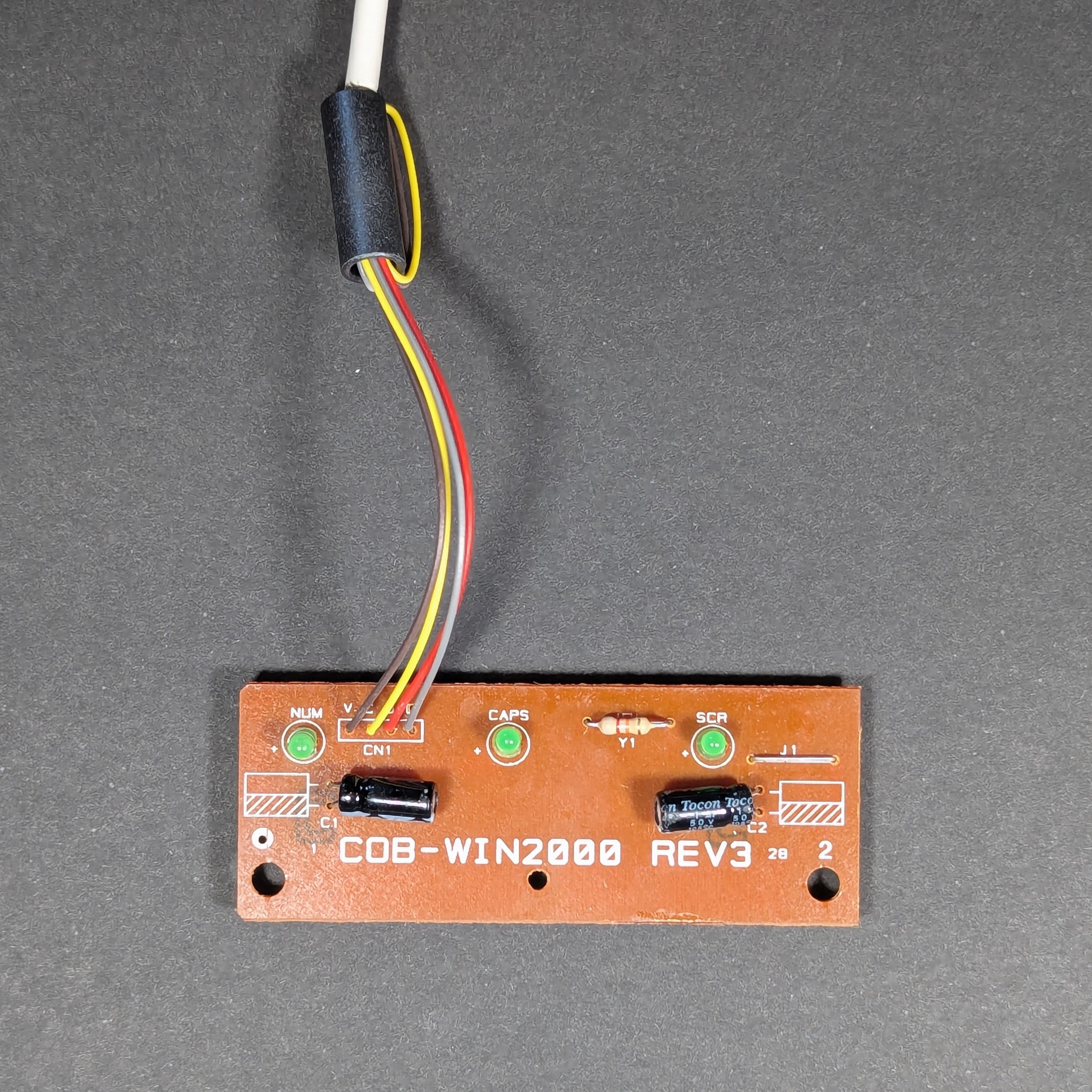
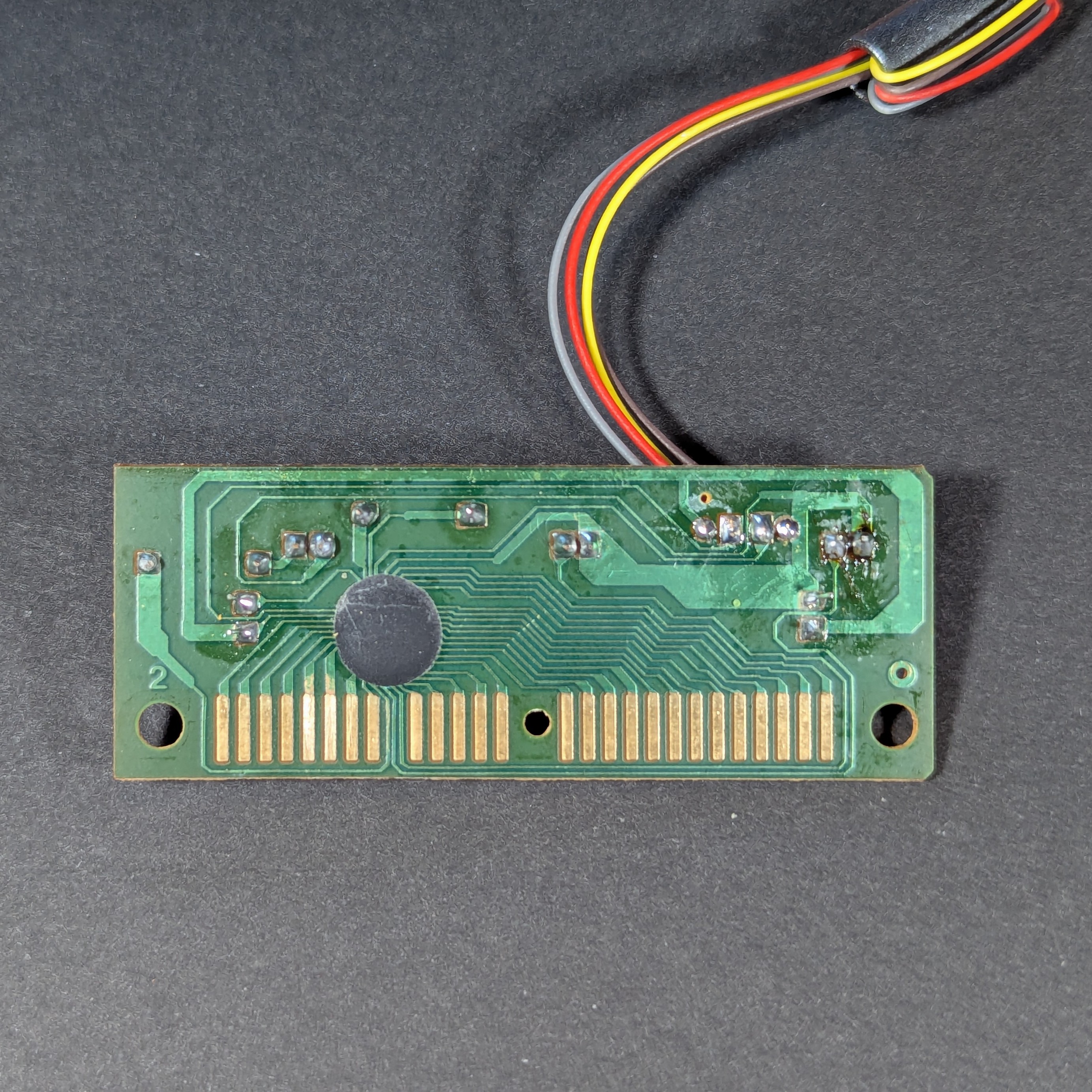
The membrane attaches to 26 gold-plated pads on the PCBA.
Observations and Conclusion #
One interesting item about this keyboard design is the history of the FCC ID: IZITK-105M. The FCC records indicate that the controller was approved on December 10th, 1991 and was applied for by Can Technology Co. Ltd. in Taiwan. Based on the 2002 dates for my keyboard, the controller saw at least a decade of production before it was presumably obsoleted by USB. It was used on numerous brands of keyboard including Conquest, Syncan TK-105M (a mechanical keyboard), Super Talent, and others.
Other than that, this keyboard is a dead end for me due to the epoxied control IC. This type of IC is nearly impossible to identify with bench top equipment - to get a chance at identification the IC would need to be carefully decapsulated and examined with a microscope. Even then, there is no guarantee the die itself has any markings that would identify the part. Regardless, I hope this information is of interest to those in the future who may run into one of these keyboard variants.
